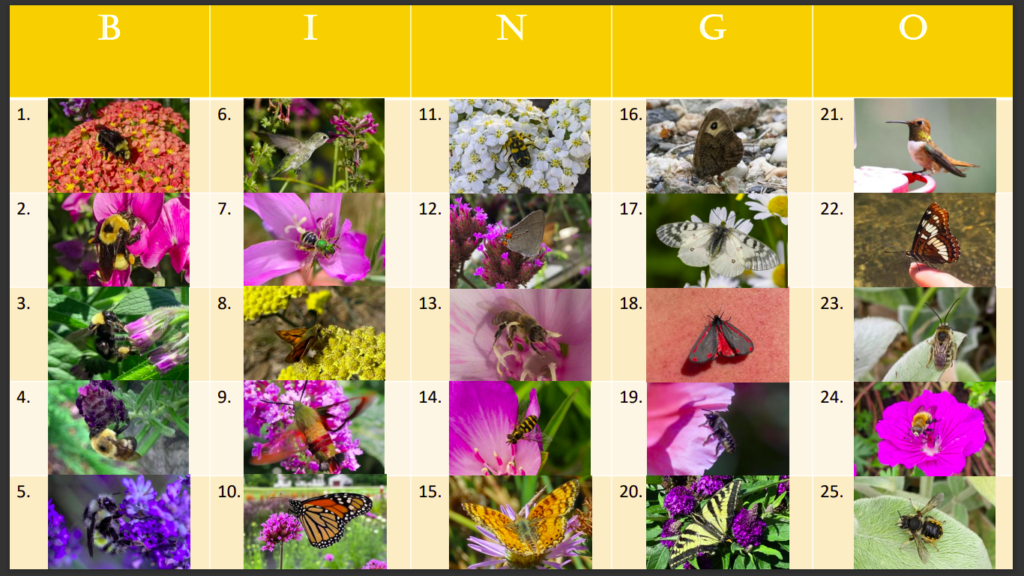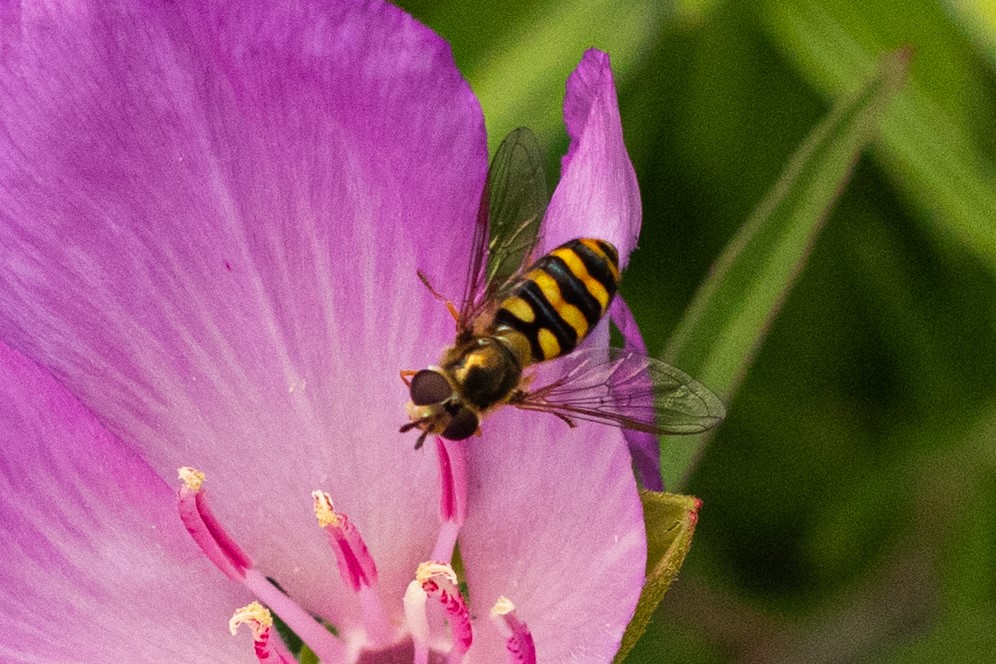
We are entering the heart of summer, with blue skies, rising temperatures, blooming flowers, and growing gardens. As some of us are taking this time to relax in the bounty of our gardens and in whatever shade we can find, our pollinator counterparts are in the middle of their busiest season. The pollinators are out in full force, and it seems almost impossible to turn around in a garden without spotting a new butterfly, bee, or beetle. So for those among us who want to engage even further with the friends visiting our gardens around this time of year, we have the perfect game for you: Pollinator Bingo!
Our Pollinator Bingo-or should we say BEEngo- is a healthy mix between Bingo and a scavenger hunt!
Here’s how to play:
- Select the Bingo Card you will use
- Download it, or print it out, and get it ready to be filled out
- Keep your eyes open for these visitors in a garden. When you spot a pollinator on your Bingo card, mark that pollinators square.
- Once you fill an entire row (horizontal, vertical or diagonal) you’ve won your BEEngo!
- Extra Credit Challenge: Try to black out the entire card!
We hope you have fun playing Pollinator Bingo outside, exploring and enjoying the natural world in some way. Good luck BEEngo players!
Below, we included some pollinator spotlights, so you can get to know some of the species on your Bingo card a little better!
Pollinator Bingo Spotlight List:
- Tribe Eucerini, Longhorned bee
Eucerini, also known as long-horned bees, are favorites among our lab members. They are the most diverse tribe in the family Apidae, with over 32 genera. These bees are solitary and ground-nesting. What makes them distinct and a lab favorite are the long antennae the males are known for and from which they get their common name. The females are also recognizable, as they have long hairs, known as scopae, on their hind legs, giving them the appearance of wearing very thick pants.

2. Species Papilio machaon oregonia, Oregon Swallowtail butterfly
As with any in the Swallowtail family, Papilio machaon oregonia, or the Oregon Swallowtail, is big, beautiful, and eye-catching. It was officially named Oregon’s state insect on July 16, 1979. It is native to the northwest and is only found in Oregon, Washington, Idaho, and sections of British Columbia. For the purposes of Pollinator Bingo, any Swallowtail will count for its space. Keep an eye out for the Oregon Swallowtail and others, and see how many different species you can find!

3. Family Syrphidae, Flower Fly
Hoverflies, flower flies, and syrphid flies are all different names for the flies within the family Syrphidae. Syrphid flies come in a wide variety of sizes and colors, with some that resemble wasps and others that look nearly identical to bees. Most syrphids, however, can be found with some kind of striping on their abdomen. Syrphids are essential to any garden as they help with pest control and pollination. Some people are surprised that flies are pollinators too, but hopefully, this list can illustrate the wide variety of pollinators out there!

4. Species Trichodes ornatus, Ornate Checkered beetle
Trichodes ornatus, or the Ornate Checkered beetle, is an interesting species, as during the early stages of its life, instead of pollinating, it feeds on pollinators. These beetles will lay their eggs on plants such as yarrow, sagebrush, and asters. When these eggs hatch, the larvae attach themselves to a visiting bee, usually a leafcutter bee. They will then be transported to the bee’s nest, where they will eat the provisions left there for the host larvae before eating the host larvae and burrowing into nearby cells to do the same. As an adult, the Ornate Checkered beetle will feed on pollen but will not miss an opportunity to snack on other visiting pollinators when foraging for pollen.

5. Species Calypte Anna, Anna’s hummingbird
Calypte Anna or Anna’s hummingbird should be a familiar sight for many of us. This rambunctious bird is a permanent resident along the Pacific Coast, staying year-round through winters instead of engaging in migration as other species of hummingbirds are known to do. Males of Anna’s hummingbird are pretty talkative, often vocalizing with a buzzy song. The males have a brilliant red head with a green body, and the females have similar green plumage, but without the red coloration on their face and neck.


These are so cool! Just might have to print some out for the Open Garden at the WCMGA Learning Garden at Jenkins Estate where I am tabling a bee booth – Saturday, August 13 from 10am-2pm. And, can’t wait to try out the bingo card in my own yard!! Hmmm, maybe I should make copies available for the kids in my neighborhood.
And, I just want to thank all of you for the wonderful work you are doing at the Garden Ecology Lab. Last Saturday I presented a workshop on Native Plants along with two fellow WCMGA members and we used Aaron Anderson’s and Jen Hays’ research as part of our presentation. Terrific work!!